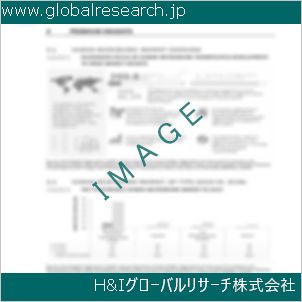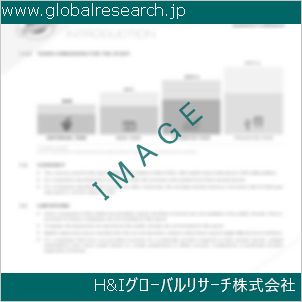Table of Contents
1 Industry Overview of Thiodiglycol
1.1 Definition and Specifications of Thiodiglycol
1.1.1 Definition of Thiodiglycol
1.1.2 Specifications of Thiodiglycol
1.2 Classification of Thiodiglycol
1.3 Applications of Thiodiglycol
1.3.1 Nuclear Application
1.3.2 Non-Nuclear Application
1.4 Industry Chain Structure of Thiodiglycol
1.5 Industry Overview and Major Regions Status of Thiodiglycol
1.5.1 Industry Overview of Thiodiglycol
1.5.2 Global Major Regions Status of Thiodiglycol
1.6 Industry Policy Analysis of Thiodiglycol
1.7 Industry News Analysis of Thiodiglycol
2 Manufacturing Cost Structure Analysis of Thiodiglycol
2.1 Raw Material Suppliers and Price Analysis of Thiodiglycol
2.2 Equipment Suppliers and Price Analysis of Thiodiglycol
2.3 Labor Cost Analysis of Thiodiglycol
2.4 Other Costs Analysis of Thiodiglycol
2.5 Manufacturing Cost Structure Analysis of Thiodiglycol
2.6 Manufacturing Process Analysis of Thiodiglycol
3 Technical Data and Manufacturing Plants Analysis of Thiodiglycol
3.1 Capacity and Commercial Production Date of Global Thiodiglycol Major Manufacturers in 2023
3.2 Manufacturing Plants Distribution of Global Thiodiglycol Major Manufacturers in 2023
3.3 R&D Status and Technology Source of Global Thiodiglycol Major Manufacturers in 2023
3.4 Raw Materials Sources Analysis of Global Thiodiglycol Major Manufacturers in 2023
4 Capacity, Production and Revenue Analysis of Thiodiglycol by Regions, Types and Manufacturers
4.1 Global Capacity, Production and Revenue of Thiodiglycol by Regions 2019-2024
4.2 Global and Major Regions Capacity, Production, Revenue and Growth Rate of Thiodiglycol 2019-2024
4.3 Global Capacity, Production and Revenue of Thiodiglycol by Types 2019-2024
4.4 Global Capacity, Production and Revenue of Thiodiglycol by Manufacturers 2019-2024
5 Price, Cost, Gross and Gross Margin Analysis of Thiodiglycol by Regions, Types and Manufacturers
5.1 Price, Cost, Gross and Gross Margin Analysis of Thiodiglycol by Regions 2019-2024
5.2 Price, Cost, Gross and Gross Margin Analysis of Thiodiglycol by Types 2019-2024
5.3 Price, Cost, Gross and Gross Margin Analysis of Thiodiglycol by Manufacturers 2019-2024
6 Consumption Volume, Consumption Value and Sale Price Analysis of Thiodiglycol by Regions, Types and Applications
6.1 Global Consumption Volume and Consumption Value of Thiodiglycol by Regions 2019-2024
6.2 Global and Major Regions Consumption Volume, Consumption Value and Growth Rate of Thiodiglycol 2019-2024
6.3 Global Consumption Volume and Consumption Value of Thiodiglycol by Types 2019-2024
6.4 Global Consumption Volume and Consumption Value of Thiodiglycol by Applications 2019-2024
6.5 Sale Price of Thiodiglycol by Regions 2019-2024
6.6 Sale Price of Thiodiglycol by Types 2019-2024
6.7 Sale Price of Thiodiglycol by Applications 2019-2024
6.8 Market Share Analysis of Thiodiglycol by Different Sale Price Levels
7 Supply, Import, Export and Consumption Analysis of Thiodiglycol
7.1 Supply, Consumption and Gap of Thiodiglycol 2019-2024
7.2 Global Capacity, Production, Price, Cost, Revenue, Supply, Import, Export and Consumption of Thiodiglycol 2019-2024
7.3 USA Capacity, Production, Price, Cost, Revenue, Supply, Import, Export and Consumption of Thiodiglycol 2019-2024
7.4 EU Capacity, Production, Price, Cost, Revenue, Supply, Import, Export and Consumption of Thiodiglycol 2019-2024
7.5 China Capacity, Production, Price, Cost, Revenue, Supply, Import, Export and Consumption of Thiodiglycol 2019-2024
7.6 Japan Capacity, Production, Price, Cost, Revenue, Supply, Import, Export and Consumption of Thiodiglycol 2019-2024
8 Major Manufacturers Analysis of Thiodiglycol
8.1 Manufacturer One
8.1.1 Company Profile
8.1.2 Product Picture and Specifications
8.1.2.1 Type I
8.1.2.2 Type II
8.1.2.3 Type III
8.1.3 Capacity, Production, Price, Cost, Gross and Revenue
8.1.4 Contact Information
8.2 Manufacturer Two
8.2.1 Company Profile
8.2.2 Product Picture and Specifications
8.2.2.1 Type I
8.2.2.2 Type II
8.2.2.3 Type III
8.2.3 Capacity, Production, Price, Cost, Gross and Revenue
8.2.4 Contact Information
8.3 Manufacturer Three
8.3.1 Company Profile
8.3.2 Product Picture and Specifications
8.3.2.1 Type I
8.3.2.2 Type II
8.3.2.3 Type III
8.3.3 Capacity, Production, Price, Cost, Gross and Revenue
8.3.4 Contact Information
8.4 Manufacturer Four
8.4.1 Company Profile
8.4.2 Product Picture and Specifications
8.4.2.1 Type I
8.4.2.2 Type II
8.4.2.3 Type III
8.4.3 Capacity, Production, Price, Cost, Gross and Revenue
8.4.4 Contact Information
8.5 Manufacturer Five
8.5.1 Company Profile
8.5.2 Product Picture and Specifications
8.5.2.1 Type I
8.5.2.2 Type II
8.5.2.3 Type III
8.5.3 Capacity, Production, Price, Cost, Gross and Revenue
8.5.4 Contact Information
…
9 Marketing Trader or Distributor Analysis of Thiodiglycol
9.1 Marketing Channels Status of Thiodiglycol
9.2 Traders or Distributors with Contact Information of Thiodiglycol by Regions
9.3 Ex-work Price, Channel Price and End Buyer Price Analysis of Thiodiglycol
9.4 Regional Import, Export and Trade Analysis of Thiodiglycol
10 Industry Chain Analysis of Thiodiglycol
10.1 Upstream Major Raw Materials Suppliers Analysis of Thiodiglycol
10.1.1 Major Raw Materials Suppliers with Contact Information Analysis of Thiodiglycol
10.1.2 Major Raw Materials Suppliers with Supply Volume Analysis of Thiodiglycol by Regions
10.2 Upstream Major Equipment Suppliers Analysis of Thiodiglycol
10.2.1 Major Equipment Suppliers with Contact Information Analysis of Thiodiglycol
10.2.2 Major Equipment Suppliers with Product Pictures Analysis of Thiodiglycol by Regions
10.3 Downstream Major Consumers Analysis of Thiodiglycol
10.3.1 Major Consumers with Contact Information Analysis of Thiodiglycol
10.3.2 Major Consumers with Consumption Volume Analysis of Thiodiglycol by Regions
10.4 Supply Chain Relationship Analysis of Thiodiglycol
11 Development Trend of Analysis of Thiodiglycol
11.1 Capacity, Production and Revenue Forecast of Thiodiglycol by Regions and Types
11.1.1 Global Capacity, Production and Revenue of Thiodiglycol by Regions 2024-2029
11.1.2 Global and Major Regions Capacity, Production, Revenue and Growth Rate of Thiodiglycol 2024-2029
11.1.3 Global Capacity, Production and Revenue of Thiodiglycol by Types 2024-2029
11.2 Consumption Volume and Consumption Value Forecast of Thiodiglycol by Regions, Types and Applications
11.2.1 Global Consumption Volume and Consumption Value of Thiodiglycol by Regions 2024-2029
11.2.2 Global and Major Regions Consumption Volume, Consumption Value and Growth Rate of Thiodiglycol 2024-2029
11.2.3 Global Consumption Volume and Consumption Value of Thiodiglycol by Types 2024-2029
11.2.4 Global Consumption Volume and Consumption Value of Thiodiglycol by Applications 2024-2029
11.3 Supply, Import, Export and Consumption Forecast of Thiodiglycol
11.3.1 Supply, Consumption and Gap of Thiodiglycol 2024-2029
11.3.2 Global Capacity, Production, Price, Cost, Revenue, Supply, Import, Export and Consumption of Thiodiglycol 2024-2029
11.3.3 USA Capacity, Production, Price, Cost, Revenue, Supply, Import, Export and Consumption of Thiodiglycol 2024-2029
11.3.4 EU Capacity, Production, Price, Cost, Revenue, Supply, Import, Export and Consumption of Thiodiglycol 2024-2029
11.3.5 China Capacity, Production, Price, Cost, Revenue, Supply, Import, Export and Consumption of Thiodiglycol 2024-2029
11.3.6 Japan Capacity, Production, Price, Cost, Revenue, Supply, Import, Export and Consumption of Thiodiglycol 2024-2029
12 New Project Investment Feasibility Analysis of Thiodiglycol
12.1 New Project SWOT Analysis of Thiodiglycol
12.2 New Project Investment Feasibility Analysis of Thiodiglycol
13 Conclusion of the Global Thiodiglycol (CAS 111-48-8) Industry 2024 Market Research Report
| ※参考情報 チオジグリコール(Thiodiglycol)は、化学式 C4H10O2S を持つ有機化合物であり、CAS番号は 111-48-8 です。この化合物は、硫黄原子が含まれている二価のアルコールであり、一般的には無色または淡黄色の液体として存在します。チオジグリコールは、主に工業用途で使用される特殊な化合物です。以下に、チオジグリコールの定義、特徴、種類、用途、関連技術について詳述いたします。 チオジグリコールの特徴としては、まずその化学構造が挙げられます。二価のアルコールであるため、二つのヒドロキシル基 (-OH) を持ち、さらに一つの硫黄原子を含んでいます。この構造は、化合物が特異な化学的性質を示す要因となります。また、チオジグリコールは親水性と疎水性の両方の性質を持ち、そのため多くの有機溶媒や水と混和する能力があります。この特性により、さまざまな用途で利用されることが可能です。 次に、チオジグリコールの種類についてですが、基本的にこの化合物は単一の構造を持つため、厳密には「種類」としてのバリエーションは少ないです。しかし、関連する化合物としては、チオジグリコールを基にした誘導体や、同様の化学的性質を持つ他の硫黄を含む化合物が挙げられます。これらの誘導体は、特定の工業プロセスや化学反応での使用を目的として設計されていることが多いです。 チオジグリコールの主要な用途としては、主に工業分野における溶剤、添加剤、あるいは反応中間体としての役割が挙げられます。具体的には、塗料、コーティング、樹脂、繊維の加工、プラスチックの製造などのプロセスで利用されています。特に、硫グリコールが持つ優れた溶解性と粘度調整能力は、これらの用途において重要です。また、殺菌剤や消毒剤としての性質も持っており、一部の製品ではこの特性を活かして使用されています。 さらには、チオジグリコールは化学合成においても重要な役割を果たしています。たとえば、特定の化合物の合成過程において、チオジグリコールは硫黄源として機能することがあります。また、チオジグリコールを用いることにより、より複雑な有機分子への変換が可能です。このように、チオジグリコールは多様な化学用途を持つ重要な化合物であると言えます。 関連技術としては、チオジグリコールを利用した合成技術やプロセスが挙げられます。化学工業では、新たな材料を開発するために、チオジグリコールを用いた化学反応や変換技術が日々進歩しています。これにより、持続可能な材料や環境負荷の少ないプロセスといった、現代のニーズに応じた新しい道が切り開かれているのです。また、チオジグリコールの性質を活かしたナノ技術に関連する応用も研究されており、さらなる発展が期待されます。 チオジグリコールの安全性についても重要なポイントです。この化合物は、取り扱いに際して注意が必要です。皮膚や目に対する刺激性があり、高濃度での吸入や摂取は健康に悪影響を及ぼす可能性があります。したがって、適切な防護具を着用することや、使用時の取り扱いに関するガイドラインを厳守することが求められます。また、環境への影響も考慮する必要があり、適切な廃棄方法やリサイクルプロセスの確立が重要です。 最後に、チオジグリコールはその多様な特性から、今後もさまざまな分野での応用が期待されています。特に工業界においては、持続可能な原料や製品開発の観点から、重要な役割を果たすことが考えられます。研究開発が進む中で、新たな機能を持つ誘導体や製品が登場することで、さらなる可能性が広がっていくでしょう。 このように、チオジグリコールはそのユニークな化学特性と多様な用途から、工業界や研究において欠かせない存在となっています。今後の技術革新や研究の進展により、新たな応用や製品の開発が進むことを期待しています。 |
❖ 免責事項 ❖
http://www.globalresearch.jp/disclaimer












